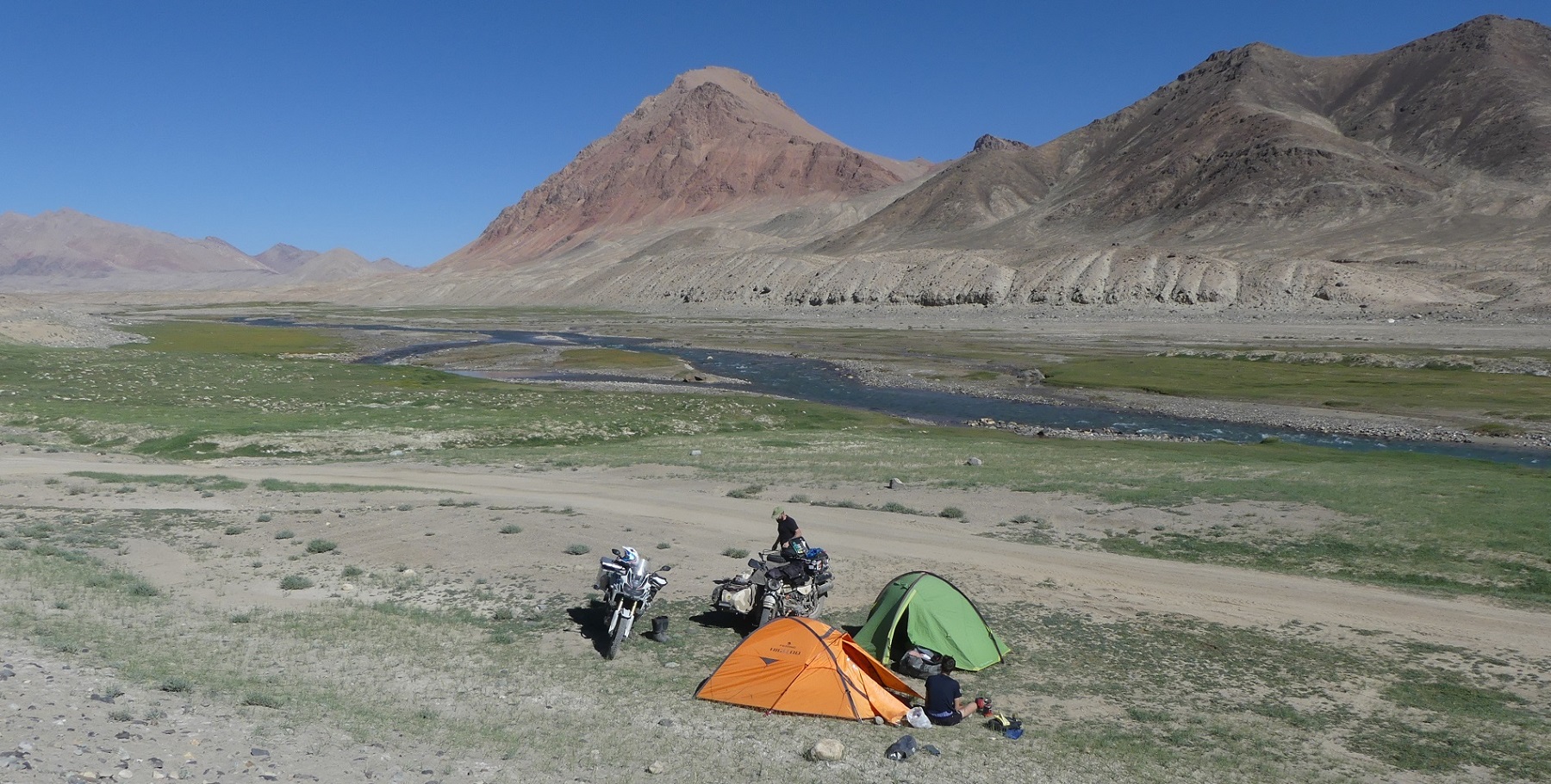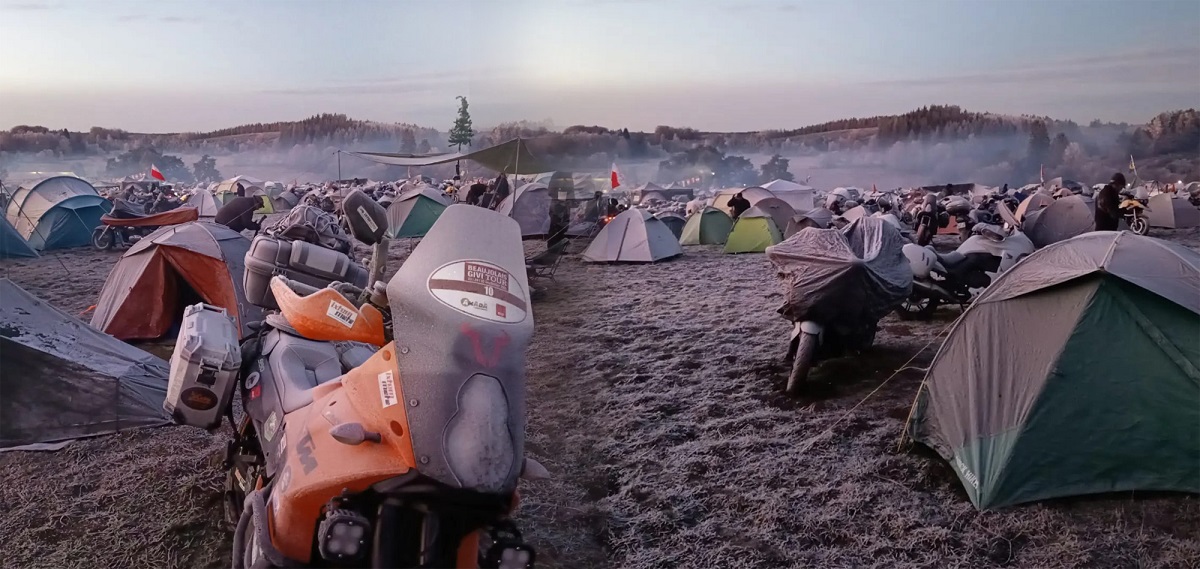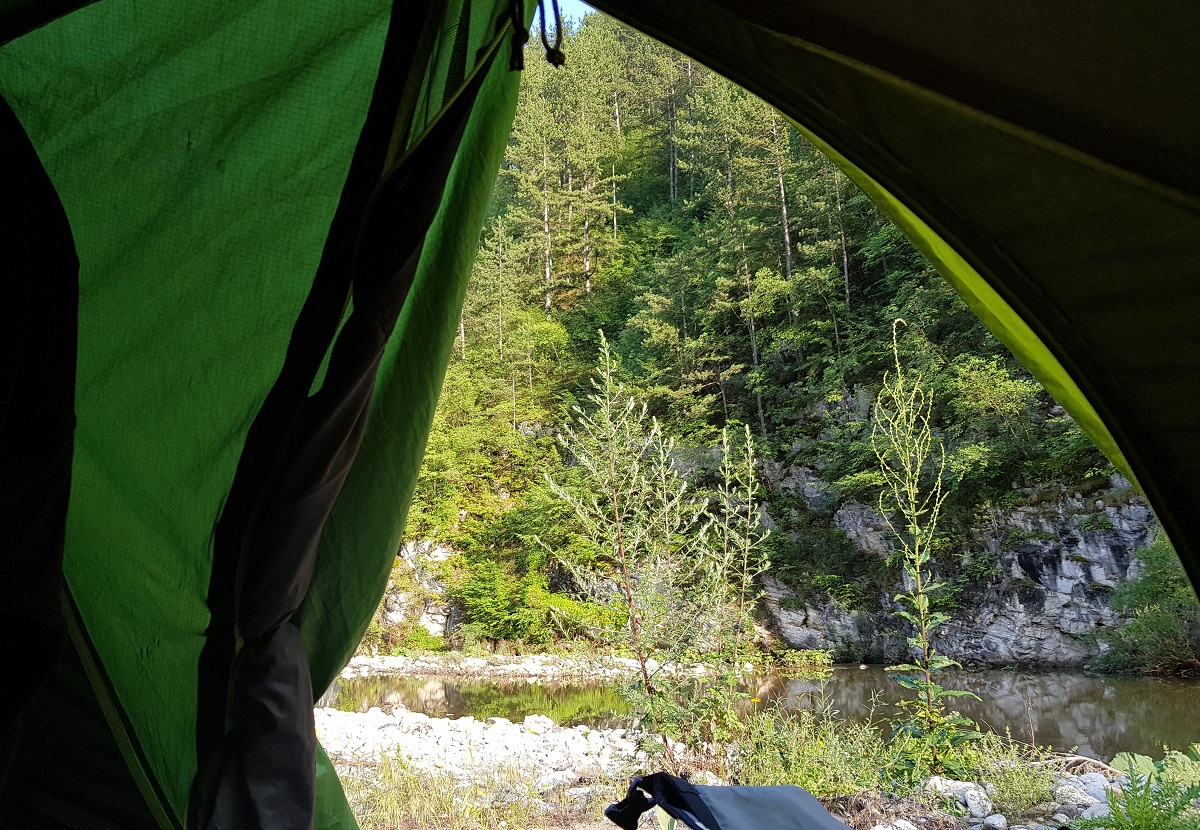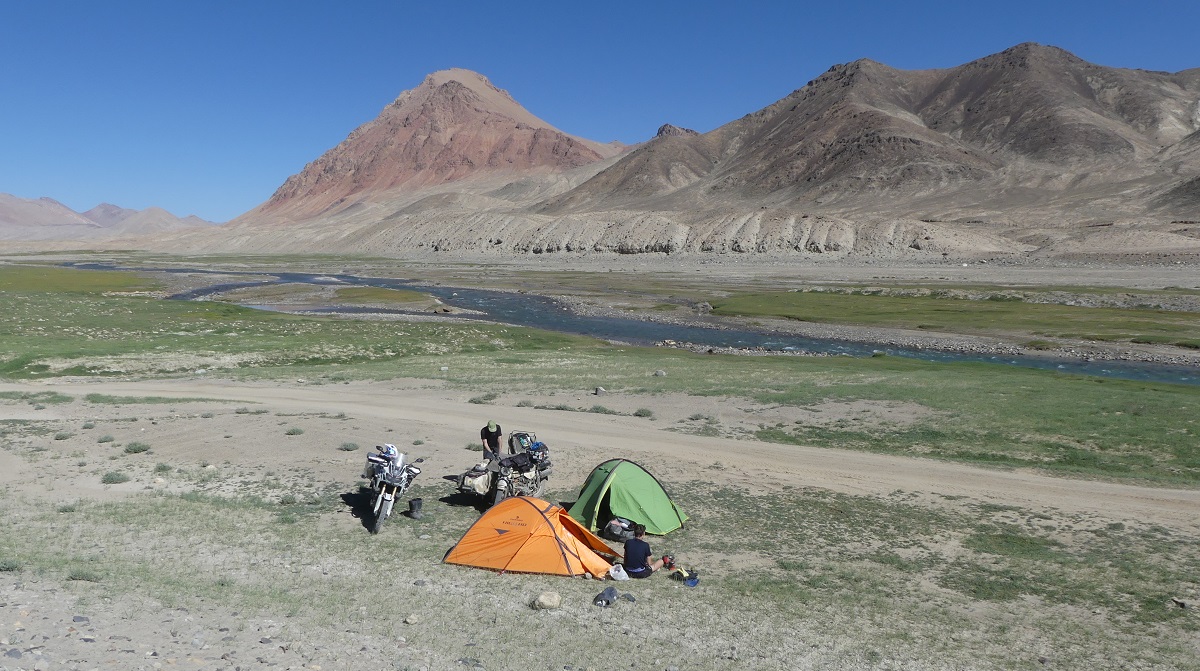
#campingmoto #bivouacmoto
What could be better than going on a motorcycle road trip and camping? Absolute freedom, a majestic middle finger to today's civilized society, a brilliant throwback to the days when prehistoric riders lived in caves and slaughtered wild boar with their bare hands. But while this transition to the motorcycle-rider state may be tempting, it does require a little preparation. Best practices? What equipment is essential? Our advice on how to bivouac with peace of mind? We share our tips with you.
How to prepare for motorcycle camping
If there's only one thing to remember from this article, it's this: pack only the essentials!
Whether you're going motorcycle camping for a weekend or a week, take only the essentials. Why diet? Every extra kilo will destabilize your bike. Every superfluous cm³ will clutter you up. So forget the cast-iron wood-burning stove, the fleece lining in summer and all your "just-in-case" gear. The idea is to angle your bike, not maneuver an ocean liner!
![]()
A few tips for organizing your belongings
There's no need to call on Marie Kondo to organize your side cases. But there are two main principles to follow. First, balance the weight. The aim is twofold: not to overload one side more than the other, and not to shift your bike's center of gravity. This means avoiding the Obut triplet in the top-case. Secondly, you need to prioritize according to need. For example, a headlamp or camel bag should be quickly accessible, whereas comforters can be crammed into the bottom of a pannier. This "intelligent" storage saves you the trouble of caving in to find your rain gear at the bottom of a side case in case of a surprise downpour. A blank load can also be a good idea, just to check that your tetris is up to scratch and that you won't be missing a strap on the day of departure.
Worried about missing something important? There's nothing like preparing a checklist of the equipment you need to take with you (to keep and improve for next time). It's better than eating your steak in tartar mode because you forgot the lighter to light the travel barbecue.

What equipment should I bring for motorcycle camping?
"Motorcycle camping gear costs an arm and a leg, doesn't it?" Not at all! Rest assured: you don't have to sell a kidney. Just a few hundred euros will be enough to equip you properly. The real difficulty lies in balancing budget, comfort and space.
![]()
What equipment is needed to sleep well in a tent?
The basics: a tent to protect you from the elements. You can opt for a model dedicated to motorcycling, but you should be aware that those designed for trekking do the job perfectly, as they are light, compact and often less expensive. It's always nice to have a large enough "airlock" to leave your (smelly) boots or rain gear in. Opting for a two-person tent when you're on your own means you can store your luggage, helmet and other bardas. What about a hammock? This is still a little-used option. It has major advantages, such as being insulated from the dampness of the ground and from any invasion of ants. The disadvantage, of course, is the need to find two trees spaced correctly.
As you know, a good night's recuperative sleep is crucial to riding in good shape the next day. So don't cut corners on your mattress. There are a number of different solutions: floor mats, inflatable mattresses of varying thickness, camp beds... What's most important? Obviously, comfort (watch out for backache), but also floor insulation. Indeed, if you're leaving outside the summer season, it's vital to be well protected from the humidity and coolness of our precious cow floor. If you opt for an inflatable, we advise you to use a ground sheet underneath as protection, to avoid micro-leaks that would force you to re-inflate in the middle of the night... As for the inflatable pillow, it may seem like a gadget, but in our opinion it's the third best invention after the fire and the wheel.

What about the sleeping bag? There's a simple rule: the more compact, the more expensive. So it's up to you to choose the right compromise: comfort temperature, price and volume. If you're not planning to go into winter, there's no need to opt for a -20°C comforter, which will take up a lot of space. If you're camping in warmer climes, a meat bag will suffice. But what's this? Otherwise known as a silk sheet (silk or cotton), this is an all-too-frequently forgotten essential. It can replace a comforter in summer, but above all this fine cocoon acts as a sheet inside your comforter. It adds a few degrees of warmth and protects your sleeping bag from sweat and dirt. And it's much easier to wash, isn't it?
![]()
A few accessories for cooking
When it comes to cooking, you can also visit the hiking section of your favorite outdoor store. You'll find ultra-compact sets that stack up like Russian dolls. Our advice? Always keep a bucket handy , so you can have a drink without having to dive into the abyss of the top case. And what about the stove? For short adventures, a basic gas model will do just fine. It's compact, easy to use and has ample autonomy.
![]()
Small essentials
A headlamp, an opinel, one or more garbage bags, casual evening wear (including a pair of shoes or flip-flops), a lighter, a power bank, a micro-fiber towel, a small bar of soap for washing up and washing dishes, etc.Camping often involves parking your motorcycle on soft ground. Wouldn't you like your bike to go horizontal overnight? Then equip your beauty with a kickstand expander! You can also opt for the jam jar lid method.

Our tips for becoming a motorcycle bivouac expert
Do you want to enjoy unlimited independence? Savor the scent of your own body after a week without a shower? Take full responsibility for your asociability? Motorcycle bivouacs are for you. We're talking here about pitching a tent outside any structure designed for the purpose, for a short period of time. Whether in the forest, the mountains or a garden, there are a few rules to observe.
![]()
First, find out about the legal aspects
In many countries, wild camping is forbidden, but bivouacs are tolerated under certain conditions. What's the difference? Bivouacs are overnight stays far from civilization. You need to be discreet. So, like a nocturnal animal, you pitch your tent at nightfall and set up camp at the first rays of sunshine. What about France? You can find all the information here.
![]()
How do I choose my pitch?
As far away from civilization as possible, to limit unexpected nocturnal encounters such as teenagers on a bender. If you're a trail rider, we recommend spots accessible only by track. Then set up camp near a tree for shade and protection from the wind. And what else? Obviously, avoid swampy areas unless you like to spend the night getting your blood sucked. Last but not least, sleeping near a lake or river has the double advantage of allowing you to wash in the fresh air and to have drinking water if you have a water bottle. Can't find a "serene" spot? Don't hesitate to ask a local. They'll be able to point you in the right direction, or even offer you a patch of grass in their garden or fields.
![]()
Camping is great. Respecting Mother Nature is better
So whether you're camping or bivouacking, you leave no trace of your passage. The best thing is to leave your spot cleaner than before. "Why clean up other people's m***?" you may ask. Firstly, because every gesture counts for our little planet and secondly, you'll tip the karmic balance in your favor, saving yourself from being reincarnated as a dung fly.
![]()
A few additional accessories for adventurers
Getting away from civilization is a real pleasure of independence. But what about? This includes a few constraints, such as the absence of drinking water or electrical outlets. Here's some additional gear for a motorcycle road-trip with bivouac in the Kazakh steppes (or Creuse).
Headlamp, phone, APN, camera - there are various solutions for recharging all these devices in the absence of 220V. The simplest? A USB plug connected to your battery. However, this solution quickly reaches its limits. You can then opt for energy banks (Powerbank) or even portable batteries. To recharge them, travel solar panels are particularly practical! So, unless you're driving in Brittany, you'll have electricity everywhere.
The 2nd must-have for isolated bivouacs: the water bottle! Yeah, you couldn't imagine riding with 30 liters of drinking water on your bike, could you? The Lifesavermodel , for example, lets you filter up to 2,000 liters of water before you have to replace the filters. Indispensable, we tell you!
What about the stove? A gasoline-powered model makes you completely self-sufficient. No need to find the right gas cartridge.On a different note, there's the Biolite, which lets you convert the energy released by burning wood into electricity.
Well, there you go. With all this advice, you're ready for adventure! And don't forget: only pack what you need, not what you don't! What's next? Choose the destination for your next motorcycle camping road trip.
Our last posts
#interviewmotarde #etonvaoumaintenant #motardevoyageuse #voyagemoto
#hivernale #millevaches #équipementmotard #aventuresmichel
#aventuresmichel #hardefitour #raidenduro #tout-terrain
Aucun produit

.JPG)
